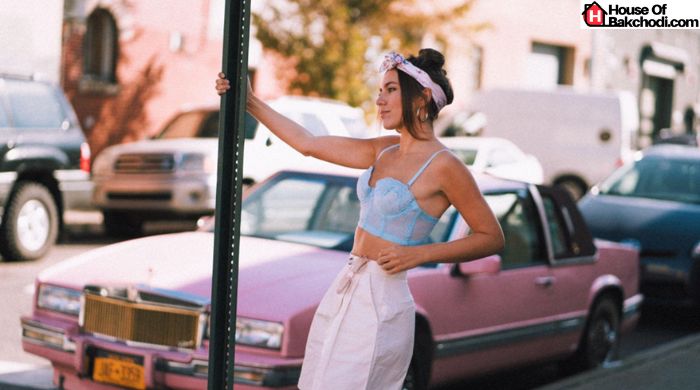Fashion Styles in the 19th and 20th Centuries
Fashion is a reflection of society and its values, and it has constantly evolved throughout history. The 19th and 20th centuries were marked by significant changes in fashion, with new styles emerging and old ones disappearing. This article will take a closer look at some of the most notable fashion styles of the 19th and 20th centuries, including the Victorian era, the Edwardian era, the Art Deco era, the Post-War era and the Modern era.
Page Contents
Victorian Era (1837-1901)
The Victorian era, named after Queen Victoria who ruled from 1837 to 1901, was characterized by strict social norms and conservative fashion. Women’s clothing was particularly restrictive, with high-necked, long-sleeved dresses, corsets, and long skirts being the norm. Men’s clothing was also formal, with high-collared shirts, long coats, and top hats being popular.
The Victorian era was also marked by the use of heavy fabrics such as velvet, silk, and satin, and the use of intricate embellishments such as lace and embroidery. The Victorian silhouette was hourglass shaped, with a small waist and full hips and bust.
Also Read: Best Guide on What To Wear On Your First Date
Edwardian Era (1901-1910)
The Edwardian era, named after King Edward VII who ruled from 1901 to 1910, saw a slight relaxation of the strict social norms of the Victorian era. Women’s clothing became less restrictive, with lower necklines, shorter sleeves, and lighter fabrics being used. Men’s clothing also became less formal, with shorter coats and more comfortable fabrics being used.
The Edwardian era was also marked by the use of delicate fabrics such as chiffon and organza, and the use of elegant embellishments such as beads and sequins. The silhouette of this era remained hourglass, but with a straighter and taller look.
Art Deco Era (1920-1929)
The Art Deco era, which took place during the 1920s, was characterized by a significant change in fashion and social norms. Women’s clothing became much more revealing, with shorter hemlines, lower necklines, and shorter sleeves being used. Men’s clothing also became less formal, with shorter suits and more comfortable fabrics being used.
The Art Deco era was also marked by the use of daring fabrics such as silk and satin, and the use of bold embellishments such as fringe and beads. The silhouette of this era was more boyish and geometric, with a flatter chest and straight hips.
Post-War Era (1940-1950)
The Post-War era, which took place after World War II, was marked by a return to traditional values and a focus on practicality and simplicity. Women’s clothing became more feminine and conservative, with full skirts, nipped-in waists and natural shoulders being popular.
Men’s clothing also became more traditional, with suits and ties being the norm. The post-war era was also marked by the use of practical fabrics such as wool and cotton, and the lack of embellishments. The silhouette of this era was hourglass shaped again, with a cinched waist and full hips and bust.
Modern Era (1970-present)
The modern era, which began in the 1970s, has seen a significant change in fashion and social norms. Women’s clothing has become much more varied, with a wide range of styles being used, from casual to formal. Men’s clothing has also become much more varied, with a wide range of styles being used, from casual to formal. The modern era has also been marked by the use of a wide range of fabrics, from natural to synthetic, and the use of a wide range of embellishments, from simple to elaborate.
The modern era also saw the rise of various subcultures, each with their unique style and fashion. Streetwear, for example, became increasingly popular in the 80s and 90s, and it continues to influence fashion trends today.
Another notable trend in the modern era is the rise of sustainable fashion. With growing concerns about the environmental impact of fast fashion, more and more designers and brands are focusing on creating eco-friendly and ethically-made clothing.
This has led to a renewed interest in traditional techniques such as hand-weaving and embroidery, as well as the use of sustainable materials such as organic cotton and bamboo.
Another influential sneaker that emerged in the 20th century is the Nike Dunk. The Nike Dunk was first released in 1985, as a basketball shoe and was primarily targeted towards college basketball players. However, it quickly gained popularity among sneaker enthusiasts and fashion-conscious consumers due to its unique design, high-quality construction, and wide range of colorways.
The Dunk was re-released in the late 90s and early 2000s, which gave the sneaker a new life and the rise of the “SB Dunk” era. The SB Dunk was a collaboration between Nike and skater, and these designs were more oriented to the skater’s lifestyle, with unique colors and materials, and special editions.
Nike Dunk was a game-changer in the fashion industry and continues to be a popular choice among sneaker enthusiasts and fashion-conscious consumers.
Conclusion
The 19th and 20th centuries were marked by significant changes in fashion, reflecting the social and cultural changes of the time. From the restrictive clothing of the Victorian era to the daring styles of the Art Deco era, fashion has always been an important aspect of human society.
Today, fashion continues to evolve, with a wide range of styles and fabrics being used, and it will be interesting to see how it will change in the future. As technology and society continues to evolve, so will fashion, with new designs, materials and techniques that are more sustainable and eco-friendly.




